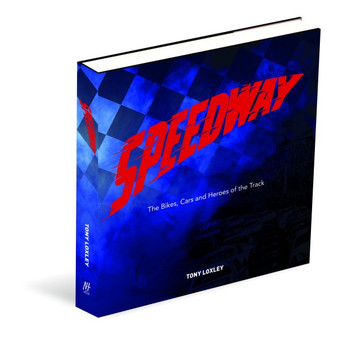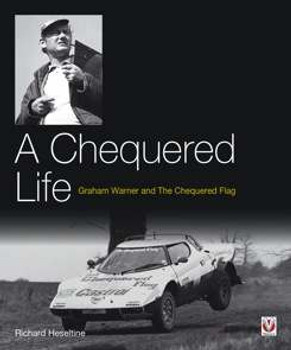Description
The Graham Warren story by Tony Webb .Published by Clark Mckay Brisbane. 178 pages. 180 photos story and statistics. soft cover Isbn 97806468266134
Australian historian Tony Webb has added another speedway book to his extensive collection ( writes Australian reviewer Gaven Dall'osto) This book has particular significance as Tony ‘s ‘Huck Fynn’ framed machine was significant enough to be included in ‘The Motorcycle, Design, Art, Desire’ exhibition at the Queensland Art Gallery on the request of co-curator Professor Charles Falco. It was timely for Tony to publish his book about the Aussie rider of the said bike, Graham Warren. Tony used information and photos from Graham’s youngest son Mark, the John Somerville photo collection, that of the late Noel Clarke (to whom the book is dedicated as he amassed a large collection as a dedicated fan) and too many others to mention. The book starts with a remarkable anecdote about Tony, at the age of 13 in his native England, watching his grandparent’s television and the first ever airing of speedway - the 1953 World final. Little did he know that one day he would own the very bike that Graham Warren was riding. The story includes how the bike was sold to Dick Bennett in Western Australia who rode it a while before it lay abandoned for 30 years on his farm. It made its way to Graham’s son Mark and then to Tony.
The main story begins with Graham Warren’s early childhood. He was a competitive cyclist, and hobbied model aircraft before becoming an apprentice fitter. He restored old motorcycles to earn money to start speedway riding. The war came and he was in the RAF until 1946. When his Dad died in 1942, he felt responsible for looking after his Mum and sister however his Mum wanted him to follow his dream and helped him buy a competitive speedway machine. He honed his skills on a home-made track and some local mudflats in the Sydney area. He rode successfully in Australia and then decided to go to England in 1947. He paid his own way, freighting his bike and hoping to earn enough money to pay for the freight later. With a letter of introduction, he lobbied the glamourous London clubs without success, then proceeded to the Midlands where he got the opportunity in the 3rd division at Cradley Heath. Here he soon showed his talent and was christened the ‘Blonde Bombshell’ because of his golden locks and the way he exploded to the highest level in a very short time. He was seconded to the Brummies (Birmingham) team. Tony continues Graham’s story chronologically in both his English and Australian seasons including his results, injuries, marriage, births and the many lost companion riders in this dangerous sport. Graham’s worst moment was when he suffered a serious triple skull fracture in New Zealand in 1951. Journalists suggested the accident was career ending but Graham was back in action after only 3 months. He won many races and broke numerous track records but he had one curse which Tony uses to title the book – the danger of winning. Tony highlights how he threw away a World Championship and many other garlands in his stubborn determination to risk all to finish in front. His ‘ever the racer’ attitude however gained him a dedicated following and celebrity status in the sport.
Graham’s career spanned two parts, 1947 to 1955 and then after a break he returned for 1959 to 1963. Tony includes how the politics and rules changed over the years. He cites how Graham was loyal to his frame builders, engine tuners, promoters and clubs. There were many quirks to his machines like his foot rest which was actually a ring spanner that could be easily adjusted and especially shaped to suit his size 6 boot. Tony includes information from interviews with many who were close to Graham in those times including the mechanics, journalists etc. The late Jim Shepard summed up Graham’s career stating that he wore “the same mantle as racing car driver Stirling Moss, the greatest ever competitor……. never to become world champion”.
The Blonde Bombshell passed away peacefully in 2004, aged 79,















